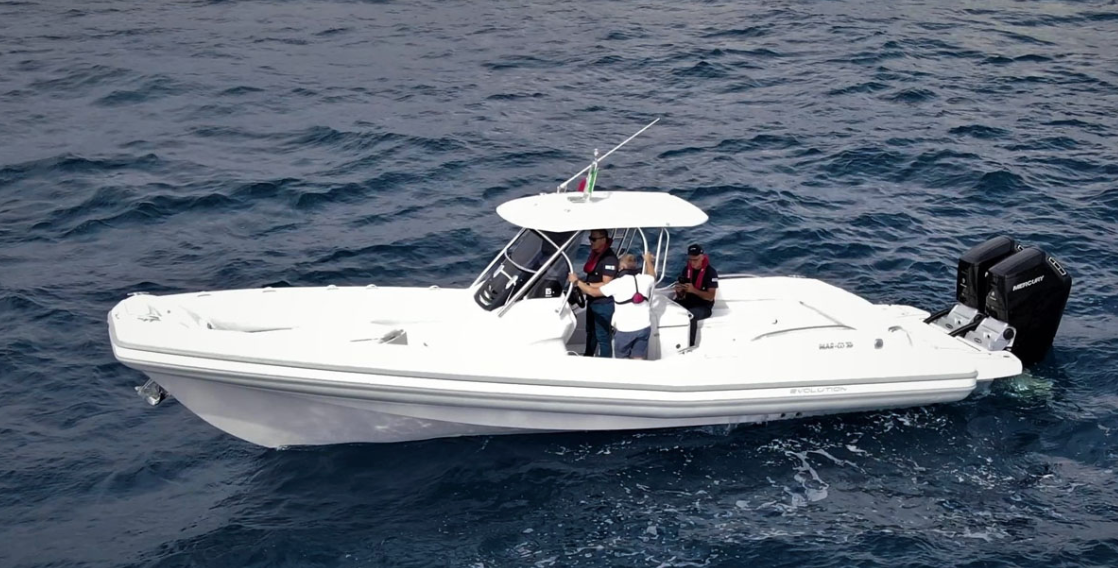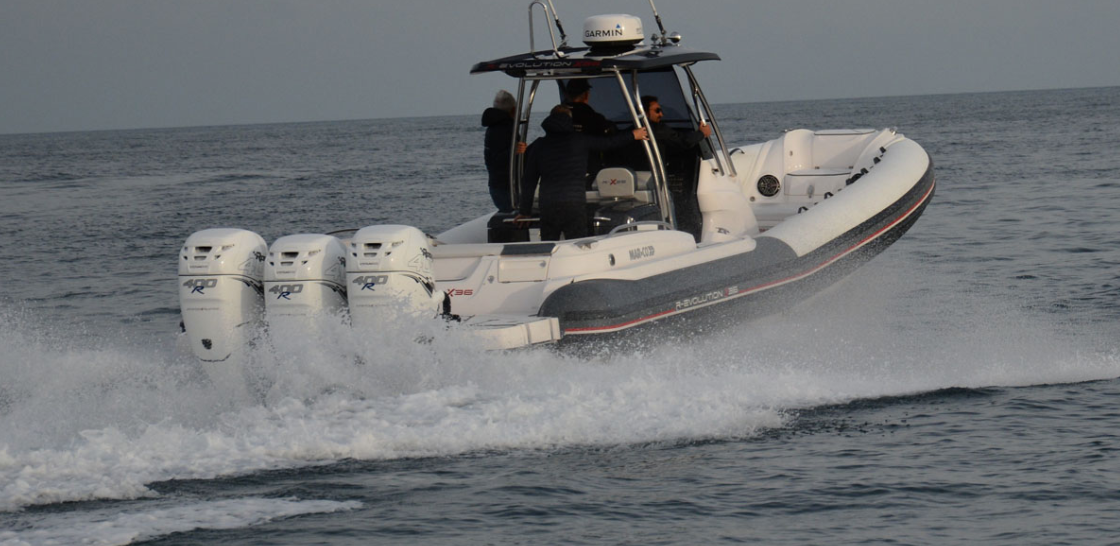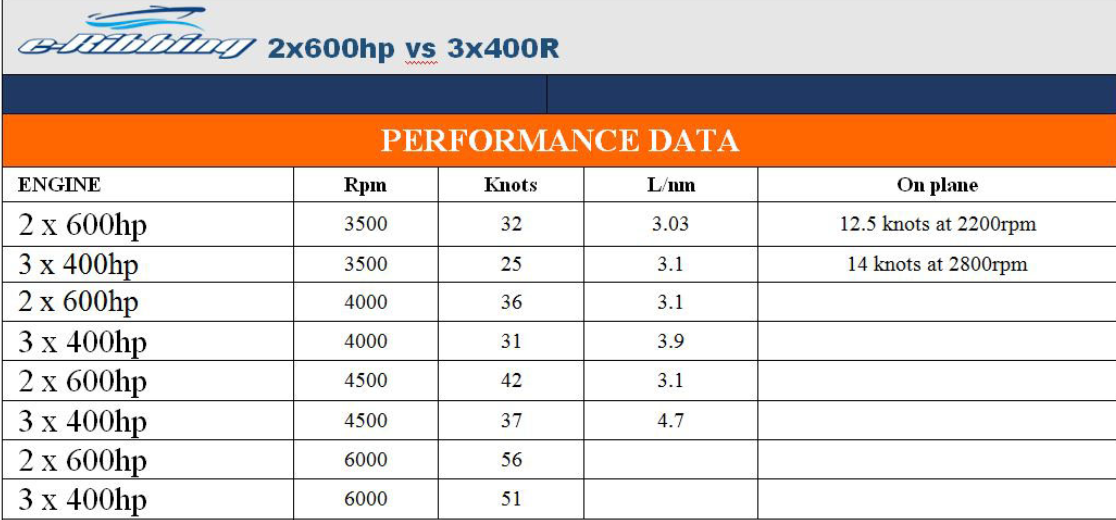Twin Mercury 600s Vs. Triple 400s: A Real-World Shootout

Recently we tested a pair of Mercury’s 600-hp V12 Verado outboards on a MAR.CO R-Evolution 36 rigid hulled inflatable boat (RIB), an intriguing combination.
The Power of Technology
Even with a light touch on the throttle, we could feel the massive torque of the 7.6-liter V12 outbards. The R-Evolution 36 launched forward with ease. But this engine is about more than power. It also has two-speed automatic transmissions and twin contra-rotating stainless-steel propellers.
We had tested the R-Evolution 36 a few years ago with triple 400-hp Mercury Racing Verado 400R outboards and thought a look at the two sets of results would be interesting.

The tests were conducted with similar loads, but on different days under disparate weather conditions and in different locations. That being said, there are a few things we learned. For example, the twin 600-hp engines kept the RIB on plane at 2200 rpm and a speed of 12.5 knots. The triple 400s, on the other hand, held the boat on plane at 2800 rpm and 14 knots. We can see other data in the following table.

The Twin 600-hp Engines Were Superior in all Areas.
- They kept the boat on plane at a lower speed and at 600 rpm less, which is important when we’re running the boat in rough seas.
- They produced cruising speeds at least 5 knots faster through the power curve.
- They ran a faster top speed.
- They are much more economical at cruising speeds.
Editor’s note. These tests were conducted by e-Ribbing.com, not by BoatTEST.com personnel.